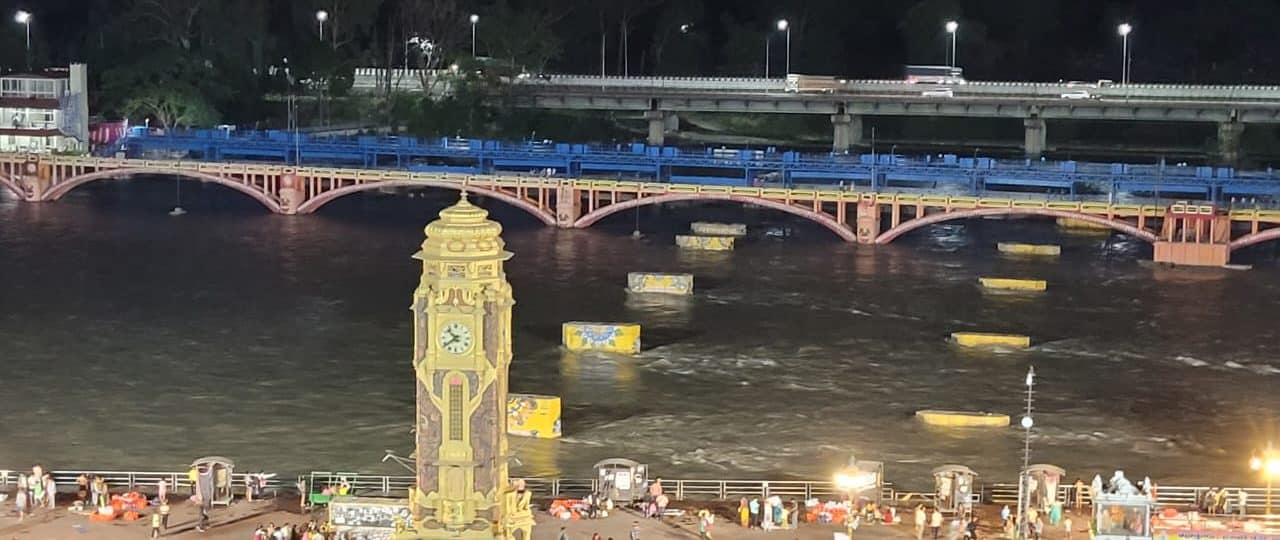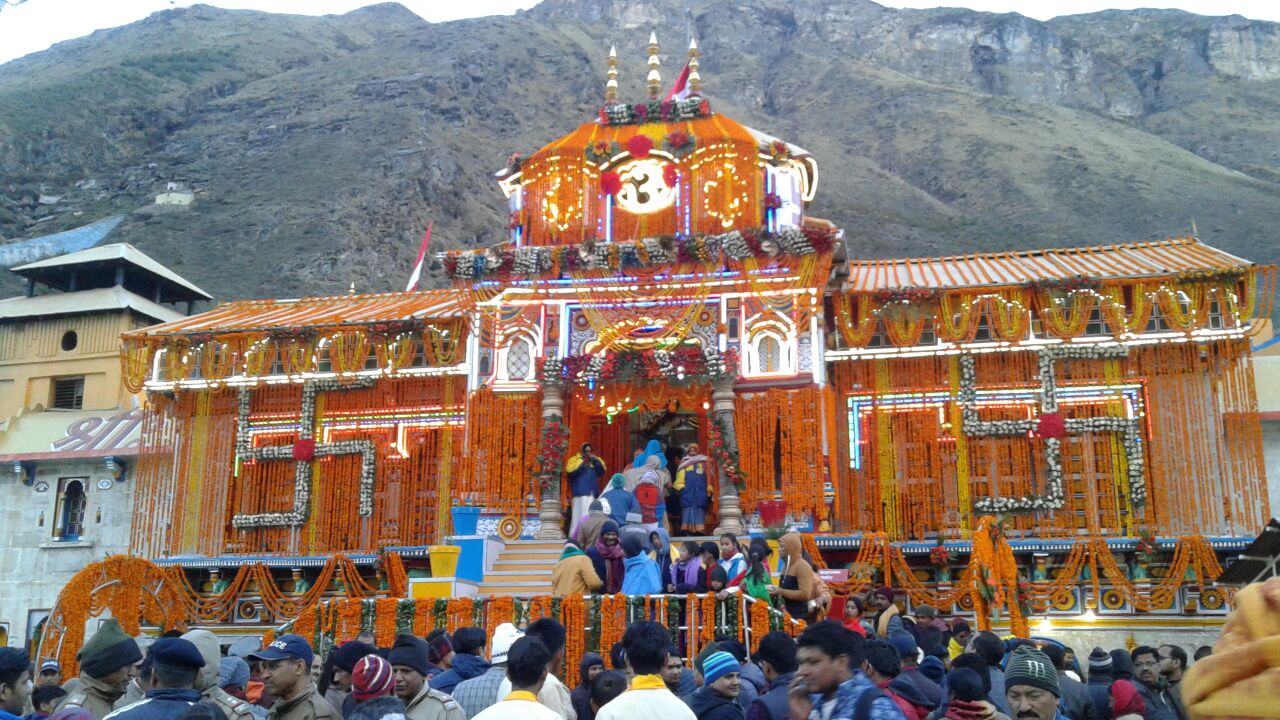You have must heard about Haridwar; the sacred town situated in the Uttarakhand state in the bank of Holy River Ganga. Haridwar known for the place of Ganga River, Spiritual enlightenment and lakh of devotees visiting Brahma Kund Har Ki Pauri you can see while your visit to Haridwar.
Visit Ganges Ghats in Haridwar
Haridwar is also known for place of Kumbh Mela, that sacred festival or we can say event ceremony takes up to 2 to 3 months in every 12 years is one of the biggest festival or fair of the world. In this fair of Kumbh Mela crores of peoples comes to Haridwar from different parts of India and also from world.
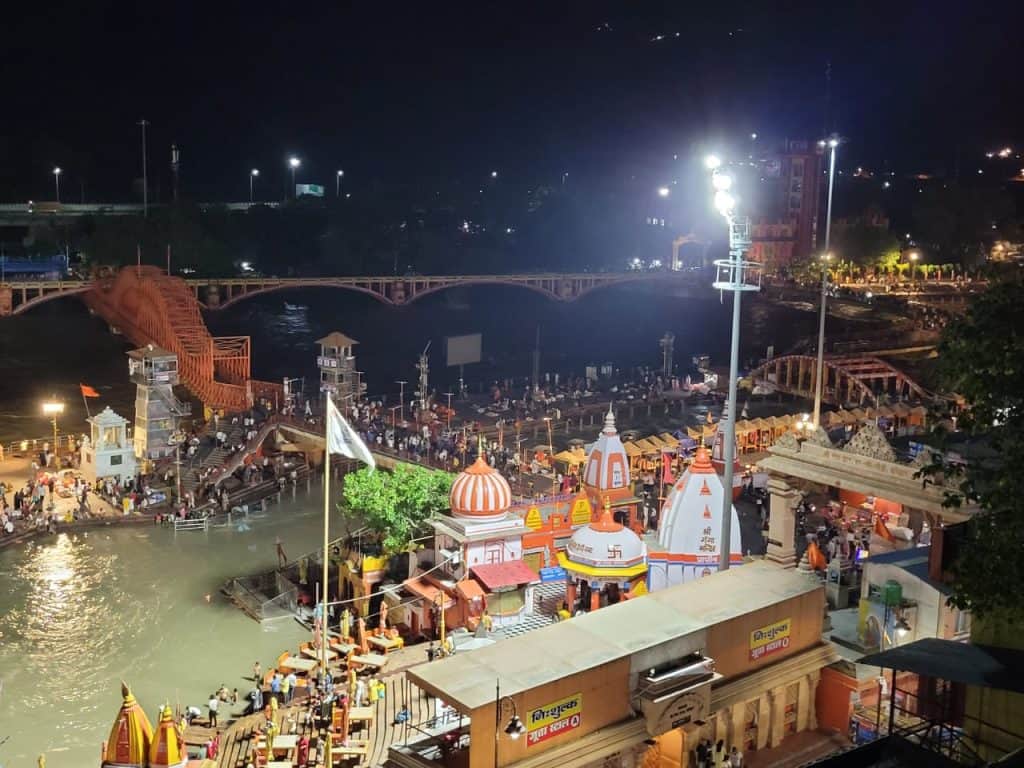
A Brief Overview of Haridwar
Haridwar is always known for adjacent town to Hills and plains of India. In earlier time it was the famous place for various trade and also Huwen ta-sang visited the city during the 7th century when he was taking a route to Tibet from here.
Haridwar is also known for gateway of Holy Char Dham Yatra (Badrinath, Kedarnath, Gangotri and Yamunotri Dham), which takes around 10 Days from Haridwar to Haridwar.
Vaishnav people say it as Haridwar and Shaiva people say its name as Hardwar. So, the place is famous for Hindu religion and there are also many temples, sightseeing you can visit while your trip to here.
You can check out the Complete Haridwar Details on the given article.
What is Ghats?
Ghats is the term mainly used for the steps leading to down the bank of river, pond in India. So, in term of Haridwar there are many Ghats that are made for peoples seating near the bank of holy river Ganges.
There are many Ghats in Haridwar which are famous and popular for the places to sit near the holy Ganges to take dip in the river and also you can sit and remember the best moments of your life while watching the river flowing.
Significance of Ghats in Haridwar
The famed ghats of Haridwar are the center of the city’s spiritual tapestry. These riverbanks are the heartbeat of the town’s spiritual life, where pilgrims congregate to offer prayers and carry out sacred rites. Each ghat has legends about historic ceremonies, blessings, and a relationship with the divine.
Ghats are more than just actual places; they are ways for the pious to connect with the Ganges’ hallowed flow. Every ghat has a special history, resonance, and benefits to offer those looking for comfort and enlightenment.
We’ll travel through Haridwar’s well-known ghats as part of this search to learn more about the legends and practices that have weaved this town into the spiritual heritage of India. Join us as we explore the famed Brahmakund Ghat (Har Ki Pauri), Kushavarta Ghat, Ram Ghat, Narayani Source Ghat, Sarvanand Ghat, Amrapura Ghat and other ghats for their holiness and significance.
Historical Significance of Ghats
The Haridwar ghats have a long history that dates back to antiquity. They preserve the echoes of old rituals and ceremonies while bearing testimony to the ebb and flow of ages. The development of spiritual traditions on these holy riverbanks has been seen, reflecting the rich tapestry of Indian heritage.
The ghats have changed throughout the ages, adjusting to the shifting currents of history. Each ghat, whether it be a little stone building or a massive architectural wonder, has a narrative to talk about tenacity and regard. They have endured the test of time and are unwavering symbols of fidelity.
Cultural and Religious Importance
The ghats in Haridwar are more than just actual buildings; they are also receptacles for religious and cultural importance. They act as the setting for a wide variety of rites and ceremonies that are essential to Hinduism. These holy places are frequented by pilgrims who come to make ablutions, worship, and participate in rituals.
The ghats are inclusive places that welcome people from all walks of life; they are not constrained by the restrictions of religion. The sanctifying waters of the Ganges here cause the distinctions between caste, creed, and social standing to disappear. It is evidence of the ability of spirituality to unite people and demonstrate that everyone is equal in the eyes of the divine.
Sages, saints, and spiritual leaders who traveled these riverbanks in search of consolation and enlightenment have left their footprints. These ghats’ fusion of humanity and divinity emits a transcendental aura that serves as a reminder of the profound interdependence of all living things.
The layers of history, folklore, and devotion that have molded these ghats into the places of spiritual renewal they are today will be revealed as we follow the ghats’ historical development.
So, let’s dive into the brief’s details of Various Ghats in Haridwar and know about them.
Brahma Kund Har Ki Pauri Ghat:
The heart and soul of Haridwar is Brahmakund Ghat, popularly referred to as Har Ki Pauri. This ghat, which is steeped in mythology and venerated in folklore, is thought to be the exact location where Lord Brahma, Lord Vishnu, and Lord Shiva are said to have left their heavenly impressions during the stirring of the cosmic ocean. The ghat’s stones take on a golden sheen when the sun sets, evoking a religious atmosphere with its ethereal atmosphere.
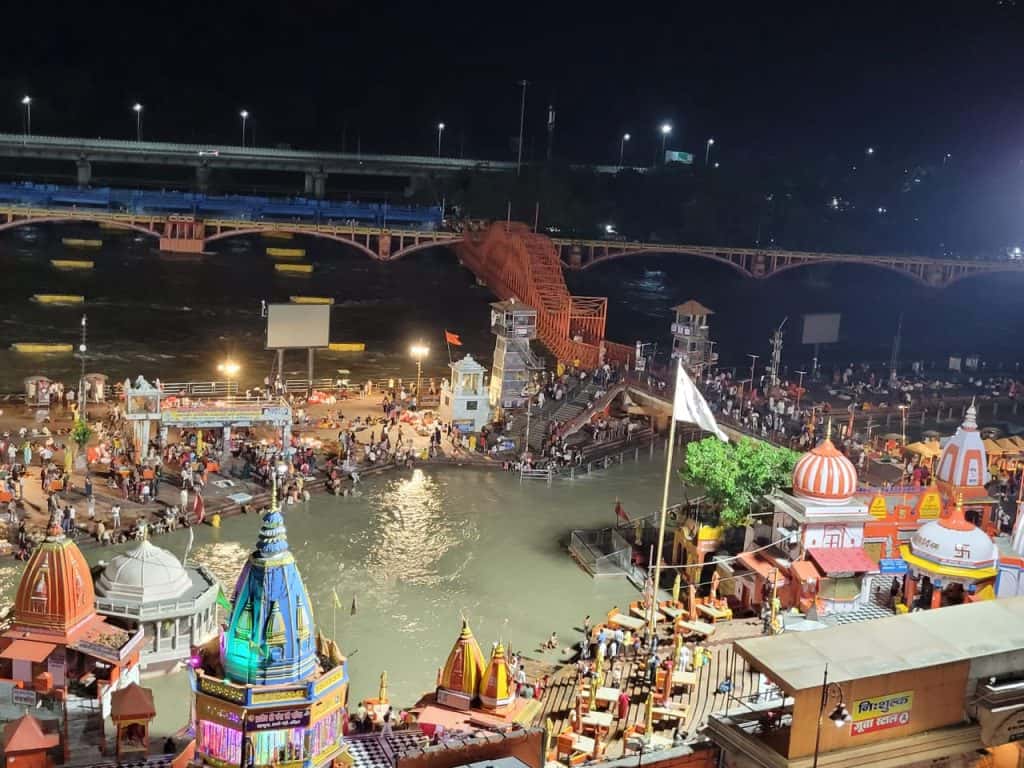
Legends further claim that Lord Vishnu left his mark at Har Ki Pauri, designating it as a location of tremendous spiritual strength. It is thought that taking a bath in these waters can purify the soul and forgive sins. Over the years, this notion has attracted millions of pilgrims and seekers to the Brahmakund Ghat steps in search of spiritual uplift and salvation.
It is possible to feel the fusion of the spiritual and the mundane at Brahmakund Ghat. The Maha Aarti, a lavish ritual worship of the Ganges that is conducted here every evening, draws pilgrims. The devotee is transported into a world of unadulterated devotion by the resonating hymns, the incense-scented air, and the rhythmic ringing of the bells.
A diya (lamp) being lit and placed on the water represents the offering of one’s prayers and aspirations to the divine. The current-driven gently flickering flames are thought to transmit the believers’ prayers to the higher realms.
The ghat is also well-known for the Kumbh Mela, an enormous convocation of devotees and seekers that occurs every twelve years and attracts millions in a manifestation of religion and spirituality that is unmatched in its scale.
Vishnu Ghat:
Vishnu Ghat is another famous Ghat in Haridwar, it is located on the way to Har Ki Pauri, you can go via narrow road where you can purchase something for yourself. Vishnu Ghat is famous and best place to take a holy dip into the Ganga River.
Ram Ghat:
Located between the Har Ki Pauri and Vishnu Ghat, a small Ghat but good to take holy dip in Ganga River.
Kusha Ghat / Kushavarta Ghat:
According to ancient scriptures, it is believed that Lord Dattatreya, an embodiment of the divine trinity Brahma, Vishnu, and Shiva, chose this very spot for his profound meditation. Kushavarta Ghat is located near the Har Ki Pauri Brahmakund.
Kushavarta Ghat serves as a sanctified arena for the ancient ritual of Pinddaan, a practice deeply rooted in Hindu traditions.
Subhash Ghat: Tribute to Netaji Subhash Chandra Bose
A representation of bravery and patriotism, Subhash Ghat was named in honor of the illustrious independence hero Netaji Subhash Chandra Bose. It may not have the deep historical roots of some of the other ghats in Haridwar, but it does have a unique historical significance.
Birla Ghat: Serenity Amidst Greenery
The surroundings and immaculate cleanliness of Birla Ghat are highly renowned. It offers the perfect location for relaxing, practicing yoga, or just doing nothing while being close to the Ganges. It is a distinctive ghat that provides a tranquil reprieve from the bustle of the city because many people come here looking for serenity and renewal.
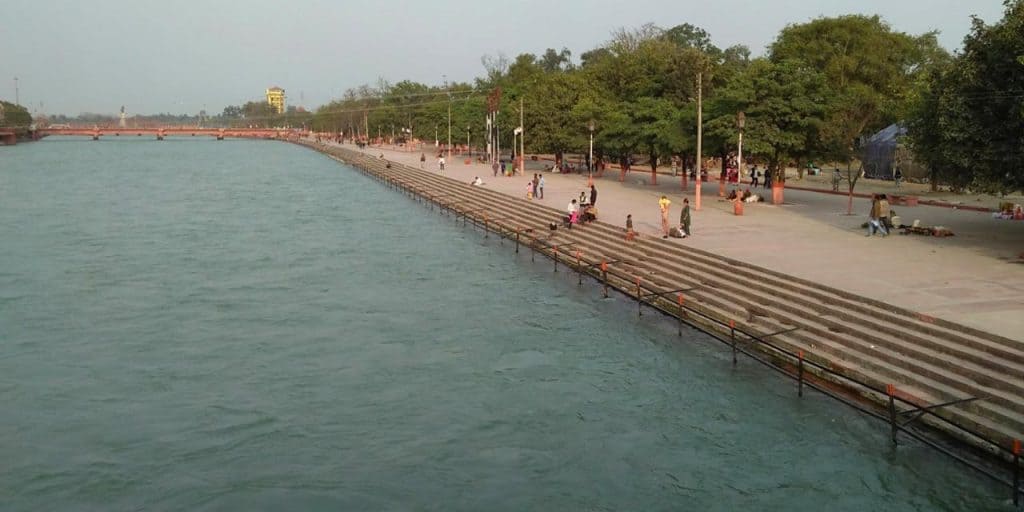
Govind Ghat: Located near the city of Haridwar Ranipur more. It is away from high ghat rushes, and you can enjoy the evening here, also Evening Ganga aarti held here, which you can see and offer prayers to Maa Ganga.
Amrapura Ghat:
Amrapura ghat is located near Shankaracharya Chowk, is a beautiful Ganga Ghat, where you can go at evening and see the amazing lighting in the Ghat.
Sarvanand Ghat:
Located in the Rishikesh Highway, an amazing and beautiful Ghat, and also, it’s a big Ganga Ghat where you can take holy dip in the Ganges and also sit there for a moment in bank of Ganges.
There are also many other Ghats like Parmarth Ghat, Saptrishi Ghat, Geeta Kutir Ghat, Prem Nagar Ashram Ghat and more.
Why Ghats in Haridwar is important for Tourists.
The Haridwar ghats are a witness to a diverse crowd of tourists and pilgrims who are drawn to the holy environment in search of something special. These holy riverbanks are the pinnacle of the pilgrims’ spiritual journeys, a sacred meeting with God. There is a sense of devotion in the air, and the city is filled with the echo of ancient chants, which creates a tranquil yet energizing atmosphere.
In contrast, the ghats provide a fascinating view into India’s rich cultural heritage for visitors. An immersion into the core of Indian spirituality and tradition is offered by the combination of rituals, celebrations, and the busy bazaar that line the riverbanks. It provides a distinctive viewpoint on the complex tapestry of Indian culture since it is a site where history, religion, and the contemporary world come together.
Frequently Asked Questions for Ghats in Haridwar
-
What is the best time to visit the ghats in Haridwar?
The best time to visit the ghats in Haridwar is during the months of October to March when the weather is relatively cooler, making it conducive for exploration and rituals. The winter months, in particular, offer a pleasant climate for visitors.
-
Are there any specific rituals or ceremonies held at the ghats?
Yes, the ghats in Haridwar are known for their various religious rituals and ceremonies. The Ganga Aarti, held at dusk, is a mesmerizing ceremony where lamps are lit, and hymns are chanted in devotion to the river. Additionally, pilgrims often engage in holy dips and offer prayers to seek blessings.
-
Is it possible to witness any festivals at the ghats?
Absolutely. The ghats in Haridwar are vibrant during festivals like Kumbh Mela and Ardh Kumbh Mela, which are celebrated with great fervor. These gatherings attract millions of devotees from around the world, making it a unique and spiritually enriching experience.
-
Are there any restrictions or guidelines for visitors at the ghats?
While visiting the ghats, it is advisable to be respectful of the religious and cultural practices. Dressing modestly is appreciated, and it’s customary to remove footwear before approaching the river. Additionally, it’s recommended to avoid littering and maintain the cleanliness of the surroundings.
-
Can visitors take a dip in the Ganges at the ghats?
Yes, the ghats in Haridwar offer the opportunity for pilgrims and visitors to take a holy dip in the Ganges. It is believed to purify the soul and is an integral part of the spiritual experience for many.
-
Are there any nearby attractions around the ghats in Haridwar?
Yes, Haridwar is a city steeped in history and spirituality, with many nearby attractions. The Mansa Devi Temple, Chandi Devi Temple, and the Rajaji National Park are popular destinations for those visiting the ghats.
-
Can one hire a guide to learn more about the history and significance of the ghats?
Yes, hiring a local guide is a great way to gain deeper insights into the history, legends, and rituals associated with the ghats. They can provide valuable context and enrich the overall experience.
-
How can I reach the ghats in Haridwar?
Haridwar is well-connected by road and rail. The nearest airport is the Jolly Grant Airport in Dehradun, which is approximately 37 kilometers away. From there, one can hire a taxi or take a bus to reach Haridwar. The city also has a railway station with regular train services.
-
Are there any accommodation options available near the ghats?
Yes, Haridwar offers a range of accommodation options to suit various budgets. There are guesthouses, hotels, and ashrams located in close proximity to the ghats, providing convenient access for visitors.
-
Are photography and videography allowed at the ghats?
Yes, photography and videography are generally allowed at the ghats. However, it’s important to be mindful of the privacy and religious sentiments of fellow visitors. Additionally, some specific events or areas may have certain restrictions, so it’s advisable to check with local authorities or guides.
